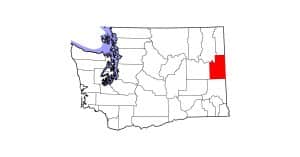Equine Coronavirus Tops COVID-19 as Horse Health Risk

By contrast, the relatively elusive equine coronavirus (ECoV)—which does not infect humans—can have “explosive” spread among horses and cause serious disease. With a 9% mortality rate, it’s “not a virus to be disregarded,” said Nicola Pusterla, DVM, PhD, Dipl. ACVIM, an associate professor in the Department of Medicine and Epidemiology at the University of California, Davis.
“The ‘real stuff’ (for horses) is equine coronavirus,” said Pusterla during the 2021 American Association of Equine Practitioners’ convention, held in Nashville, Tennessee, and virtually last December.
Horses Test Positive for the COVID-19 Virus
Scientific models have suggested horses might be susceptible to SARS-CoV-2, the COVID-19 virus. And researchers have shown that dogs, cats, minks, and other animals acquire SARS-CoV-2 from humans and possibly contribute to the virus’ spread. In some cases—with minks in particular—the virus can mutate within the species before reverting back to humans in a mutated form.
So far, the horse’s role in the current pandemic has been unknown. So Pusterla and his fellow researchers decided to test more than 600 horses exposed to people with confirmed active COVID-19 infections. The researchers determined that horses can, in fact, become seropositive for SARS-CoV-2—meaning they show specific antibodies to the virus in their blood, suggesting infection—from being around seropositive humans.
However, seropositive rates in horses are rare—less than 7% despite being surrounded by COVID-19-positive humans—and the horses don’t have detectable viral antigens in their nasal secretions. Furthermore, the virus doesn’t appear to make the animals sick, as none of the seropositive horses showed clinical signs, he said.
For these reasons, horses having any significant contribution to the current pandemic is highly unlikely, Pusterla said.
“If we look at cats and dogs that share households with a COVID-19 patient, it is up to 40% of these companion animals that will acquire the infection and show seroconversion, and the biggest risk factor is having the companion animal sleep with you,” Pusterla said. “Luckily that practice is not done commonly in the equine field, so I think we’re fairly safe there.”
Equine coronavirus, on the other hand, can cause serious disease in horses, he said. Infected animals can develop fever, lethargy, anorexia, and a variety of other signs, including watery diarrhea and neurologic issues. While most horses survive ECoV infection with supportive care, including anti-inflammatories, antibiotics, and fluids, Pusterla reiterated that about 9% must be humanely euthanized.
“If you think about it, 9% is not much, but that’s higher than what the global human population is experiencing with SARS coronavirus, so this is not a virus to neglect,” he said.
Recognizing Disease and Curbing its Spread
Because of its vague and variable clinical signs, ECoV can be difficult to recognize at first, said Pusterla. “That virus makes a fool out of you,” he said. “It’s an enteric (intestinal) organism that unfortunately doesn’t always display enteric signs, which makes it a little bit more challenging.”
With good protocols in place, though, veterinarians can rapidly recognize signs of a viral infection and ultimately identify what’s causing it.
That means isolating any horse with fever and lethargy—which are suggestive of a potentially contagious disease—immediately and drawing samples for a complete blood count (CBC) panel. Low lymphocyte counts on the CBC should strongly suggest the presence of a virus.
“Every time I see a horse with fever and lymphopenia (abnormally low white blood cell counts), I have to consider a virus, independent of what the etiology is,” he said.
In addition to screening for other viruses, veterinarians can run quantitative polymerase chain reaction (qPCR) tests on the horse’s fecal samples to look for ECoV. If a test is positive, the entire farm should go into quarantine for two weeks, after which time the epidemic usually comes to an end naturally, Pusterla said. Seropositive horses should be isolated for a week and then retested before being released from isolation to ensure they have reconverted to seronegative. About 15 to 20% of horses in an outbreak shed virus without clinical signs.
Equine coronavirus has a fecal-to-oral transmission route, he said. Biosecurity should include thorough handwashing between handling horses and disinfection of equipment and stalls—keeping in mind that ECoV-positive horses tend to shed the highest amount of virus about two or three days after becoming seropositive. “These horses will paint the stalls with coronavirus,” Pusterla said. “And be aware, especially if you have a horse (that) has watery diarrhea, there’s a lot of volume, (and) there’s a lot of virus, which speaks for the contagiousness of this virus.”
Fortunately, ECoV doesn’t survive long on surfaces and succumbs to heat and disinfectants easily, he said.
Take-Home Message
Although horses don’t appear to be major players in the current COVID-19 pandemic, Pusterla said it makes sense for people to practice biosecurity with horses if they test positive for SARS-CoV-2. “I would still say that if we have someone that acquired infection and happened to be a horse owner, I would really encourage them to take the same precautions as we take amongst ourselves,” he said.

Written by:
Christa Lesté-Lasserre, MA
Related Articles
Stay on top of the most recent Horse Health news with












